Proof that Banks Create Money
Do banks really create money? Yes! But we know it’s hard to believe. After all, the police spend time and energy hunting down any criminal gang that starts printing their own £10 notes. But when it comes to digital money – the numbers in your bank account – the same rules don’t apply.
Don’t take our word for it – this is Sir Mervyn King, governor of the Bank of England:
When banks extend loans to their customers, they create money by crediting their customers’ accounts.
And here is Martin Wolf, chief economics editor for the Financial Times:

The essence of the contemporary monetary system is creation of money, out of nothing, by private banks’ often foolish lending
In other words, when banks make loans, they create brand new money (in the form of the numbers in our bank accounts). The chairman of the Financial Services Authority, Lord Adair Turner has described this system as being at the root of the financial crisis:
The financial crisis of 2007/08 occurred because we failed to constrain the private financial system’s creation of private credit and money.
Here’s further confirmation from a Bank of England paper:
By far the largest role in creating broad money is played by the banking sector… When banks make loans they create additional deposits for those that have borrowed the money
Even before the crisis banks enjoyed various kinds of state support, including the effective right to create money.
So when you take out a loan from the bank, the ‘money’ is just typed into your account and created effectively out of nothing. Here’s further proof from Paul Tucker, Deputy Governor of the Bank of England and Member of the Monetary Policy Committee (the term ‘extend credit’ is a synonym for ‘make loans’):
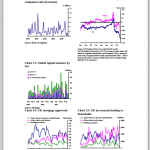
Banks extend credit by simply increasing the borrowing customer’s current account … That is, banks extend credit [i.e. make loans] by creating money
[Banks] can lend simply by expanding the two sides of their balance sheet simultaneously, creating (broad) money.
That’s a very mundane way of saying that the creation of money in the UK has been privatised. In other words, banks are able to create all the money in the economy and lend it to us. This has a wide range of rarely-discussed consequences and effects upon the economy and society, and is surely something that we should be questioning in the wake of a huge financial crisis.
If you’ve always thought that banks took money in from savers and lent it to borrower (as we did, before we started researching this issue), this can be quite hard to believe. But here’s the chairman of the Financial Services Authority, Lord Adair Turner:
The banking system can thus create credit and create spending power – a reality not well captured by many apparently common sense descriptions of the functions which banks perform. Banks it is often said take deposits from savers (for instance households) and lend it to borrowers (for instance businesses) with the quality of this credit allocation process a key driver of allocative efficiency within the economy. But in fact they don’t just allocate pre-existing savings, collectively they create both credit and the deposit money which appears to finance that credit.
However, the UK is not a special case – the same system operates in every country in the world.
But isn’t this just the Money Multiplier?
It is important to note that what is being described in these comments is not the money multiplier model of banking so beloved of economics textbooks (which implies the central bank has complete control over the amount of money that banks can create). Empirical research has proved that banks do not need reserves to make loans:
There is no evidence that either the monetary base or M1 leads the [credit] cycle, although some economists still believe this monetary myth. Both the monetary base and M1 series are generally procyclical and, if anything, the monetary base lags the [credit] cycle slightly.
MPs Talk about Banks Creating Money
Conservative MP Jesse Norman sits on the Treasury Select Committee, a group of MPs that is responsible for scrutinising the Treasury, Bank of England and Financial Services Authority. In 2011 he wrote the following in a paper entitled The Case for Real Capitalism:
[C]ommercial banks have an even greater power than that: they have the power to create credit—that is, money—by expanding their balance sheets. It is not widely understood how important this power is: of the money presently in circulation in the UK economy today, three per cent takes the form of cash; 97 per cent is in credit and deposits. This financial alchemy is an extraordinary privilege, which we as citizens and taxpayers underwrite.
Even Major City firms talk about Banks Creating Money:
A recent paper from Legal and General Investment Management confirmed the fact that most money is created by banks. This is a firm with nearly 10,000 employees and revenue of over £18bn. Their paper opens with:
We all know that money makes the world go round. But where does it come from? Before the recent descent into central bank money printing, the answer was that banks created money whenever they made a new loan.
In America:
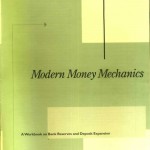
The actual process of money creation takes place primarily in banks.
In the real world, banks extend credit, creating deposits in the process , and look for the reserves later.
And in Europe:
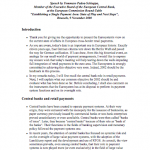
At the beginning of the 20th (century) almost the totality of retail payments were made in central bank money. Over time, this monopoly came to be shared with commercial banks, when deposits and their transfer via checks and giros became widely accepted. Banknotes and commercial bank money became fully interchangeable payment media that customers could use according to their needs.
In the Eurosystem, money is primarily created through the extension of bank credit…. The commercial banks can create money themselves, the so-called giro money.
This paper contends that the emphasis on policy-induced changes in deposits is misplaced. If anything, the process actually works in reverse, with loans driving deposits. In particular, it is argued that the concept of the money multiplier is flawed and uninformative in terms of analyzing the dynamics of bank lending. Under a fiat money standard and liberalized financial system, there is no exogenous constraint on the supply of credit except through regulatory capital requirements. An adequately capitalized banking system can always fulfill the demand for loans if it wishes to.
It is argued by some that financial institutions would be free to instantly transform their loans from the central bank into credit to the non-financial sector. This fits into the old theoretical view about the credit multiplier according to which the sequence of money creation goes from the primary liquidity created by central banks to total money supply created by banks via their credit decisions. In reality the sequence works more in the opposite direction with banks taking first their credit decisions and then looking for the necessary funding and reserves of central bank money.
In Canada:
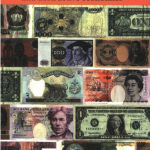
Each and every time a bank makes a loan, new bank credit is created – new deposits – brand new money
And a few more quotes from the UK:
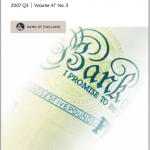
Broadly speaking, at present, the money-creating sector covers UK banks and building societies, whereas the money-holding sector consists of UK households and private companies.
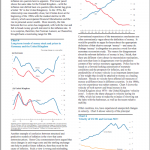
In the United Kingdom, money is endogenous—the Bank supplies base money on demand at its prevailing interest rate, and broad money is created by the banking system
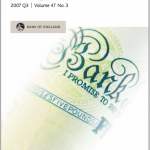
The money-creating sector in the United Kingdom consists of resident banks (including the Bank of England) and building societies
changes in the money stock [i.e. the total amount of money in the economy] primarily reflect developments in bank lending as new deposits are created.
The money stock is a dependent, endogenous variable. This is exactly what the heterodox, Post-Keynesians, from Kaldor, through Vicky Chick, and on through Basil Moore and Randy Wray, have been correctly claiming for decades, and I have been in their party on this.
Given the near identity of deposits and bank lending, Money and Credit are often used almost inseparably, even interchangeably…
…the banking sector plays such an important role in the creation of money. Changes in the terms for deposits will affect the demand for money, while changes in the terms for loans will affect the amount of bank lending and hence money supply.
Money-creating organisations issue liabilities that are treated as media of exchange by others. The rest of the economy can be referred to as money holders
And if you need further proof, here’s a letter written by a correspondent of ours to the Bank of England (see the original here). He asked them:
When a commercial bank makes a loan to a borrower, does the commercial bank in effect create new money? In other words, when a bank makes a loan to a borrower, is that ‘money’ just created out of thin air?
And the Bank of England response was:
When banks make loans, commercial banks do indeed create much of the money in the economy.
From the Mainstream Press
[M]uch as they might like to think they are in charge, it isn’t really the central bank in a country that creates the money – it is the commercial banks.
Every time they expand their lending they increase the supply of money in the economy. And every time they contract lending they reduce it.

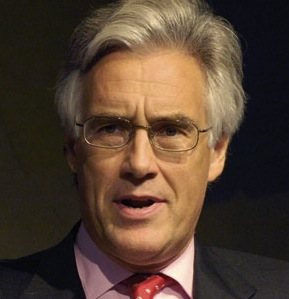
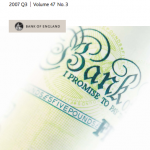
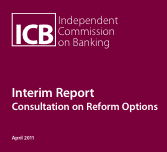
No comments:
Post a Comment